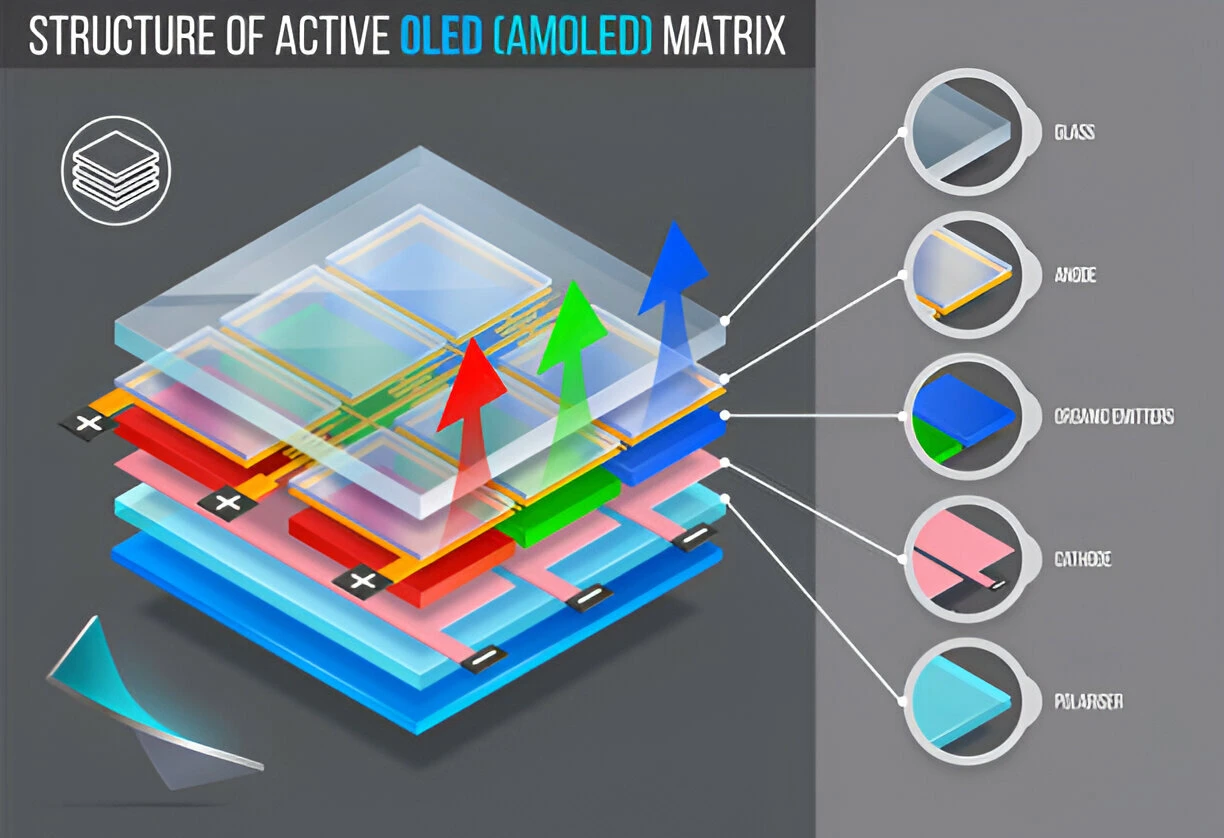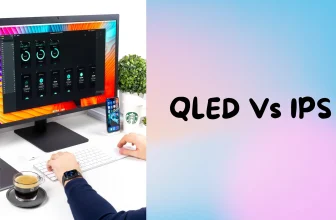IPS vs. OLED Comparison: What’s Your Ideal Panel?
IPS vs. OLED is a hot topic in the tech world, with everyone debating which is better. IPS, known for its wide viewing angles and accurate colors, goes head-to-head with OLED, famous for its vibrant hues and true blacks. So, which one suits your needs best? Let’s dive in and find out together!
Overview Of IPS and OLED
IPS, or In-Plane Switching, panels stand as a hallmark in monitor technology, offering a stellar combination of viewing angles and color rendition.
They’re designed to be better than older TN panels by using liquid crystals that can move horizontally, improving how you see the screen from different angles.
On the other hand, OLED panels are a big step forward in display tech. Instead of having a backlight like traditional LCD screens, OLED screens have tiny lights in each pixel; this means each pixel can make its light, giving you super accurate colors and deep blacks.
Our Favorite IPS Monitors
LG 27-inch QHD 165Hz 1ms Nano IPS Gaming Monitor
LG UltraGear QHD 27-Inch Gaming Monitor 27GL83A-B
GIGABYTE M27Q 27″ 165Hz 1440P – KVM Gaming Monitor
AOC Q27G3XMN 27″ Mini LED Gaming Monitor
IPS vs. OLED: What’s The Difference?

Here’s a brief comparison table for IPS vs. OLED panels:
|
Feature |
IPS |
OLED |
|
Viewing Angles |
Wider |
Wide |
|
Color Accuracy |
Excellent color accuracy |
Vibrant colors (may exaggerate saturation) |
|
Thickness |
Thicker |
Thinner |
|
Image Retention |
Minimal retention with prolonged exposure |
Susceptible to retention, requires management |
|
Screen Size |
Various |
Various |
|
Refresh Rate |
Limited to around 360Hz |
Up to 480Hz |
|
Response Time |
Generally slower |
Near-instantaneous |
|
Power Consumption |
Use more power |
Use less power |
|
Longevity |
Last longer |
Last long |
Now, let’s get into the details to see which suits your needs better!
Design
Winner: OLED
Both panels can be thin, but OLED displays can be even thinner than IPS ones.
IPS panels’ design typically includes a backlighting system behind the LCD layer, resulting in a thicker display than OLED.
In contrast, OLED panels feature a thinner design due to their self-emissive pixels, eliminating the need for a separate backlight; this allows for slimmer devices and more flexible form factors.
Additionally, OLED panels are known for their flexibility for innovative form factors such as curved or rollable displays.

Color Accuracy – Image Retention
Winner: IPS
Comparing color accuracy, IPS panels are known for providing more accurate colors with wider view angles, making them popular among graphic designers and photographers.
OLED panels, though, tend to make colors look more vibrant, sometimes too much so. They don’t have issues like IPS glow like in the IPSs because each pixel emits light, creating a more even brightness across the screen.
However, OLED screens might not be as bright as IPS panels, especially with tiny LED backlighting.
So, IPS panels are a good choice if you prioritize accurate colors and wide viewing angles. But if you want vibrant colors and don’t mind a slight exaggeration, OLED screens could be more appealing. It depends on your preference and how you plan to use the display.
Regarding image retention, OLED panels are more susceptible to this issue because each pixel emits light. But it goes away after a while or when you refresh the pixels.
Screen Size – Resolution

Winner: OLED
IPS and OLED panels offer a range of screen sizes and resolutions to cater to diverse consumer needs. If I need to pick, the OLED is the winner.
IPS panels are commonly found in various devices, including computer monitors, laptops, and televisions, with sizes ranging from small portable displays to large-format screens exceeding 80 inches.
IPS panels support many resolutions, from SD to HD, FHD, QHD, and even 4K Ultra HD, delivering crisp and detailed images across different screen sizes.
OLEDs, while also available in various sizes, often excel in premium displays, including high-end smartphones, tablets, and flagship TVs. They offer resolutions comparable to IPS, ranging from HD to 4K Ultra HD and beyond.
Refresh Rate – Response Time
Winner: OLED
OLED panels offer refresh rates up to 480Hz, ideal for most gamers. IPS monitors can reach 500Hz but struggle with fast response times at such rates, causing ghosting in games. However, even with 360Hz models, IPS panels aren’t as fast as OLED.
OLED panels have near-instantaneous response times. So, what you get is smooth gaming with no ghosting. While IPS varies in performance, it can still deliver smooth gaming as long as its response times match the refresh rate.
Power Consumption – Longevity

IPS panels use more power but last longer, while OLED panels are more energy-efficient but might not last as long.
IPS panels use more power because they need a constant backlight. OLED panels are more energy-efficient because each pixel lights up on its own.
On the other hand, IPS panels last longer than OLED panels. OLED pixels can wear out over time, causing problems like burn-in and dimness. IPS panels usually stay consistent for longer, making them better for long-term use.
So, it depends on what you need: longer-lasting screens or ones that save energy.
Which One Is For You?
It depends on you. If you prioritize color accuracy, wide viewing angles, and a balanced visual experience, IPS panels are an excellent choice.
However, if you value vibrant colors, true blacks, and a sleek, modern design, OLED panels may be more suitable for you. They offer superior contrast and thinner profiles, making them ideal for immersive entertainment experiences.
Also, consider your intended usage, budget, and environmental conditions. IPS panels may be better if you use your display primarily for color-critical work or require wide viewing angles. Yet, if you’re a multimedia enthusiast or gamer who values stunning visuals, OLED panels could offer a more immersive viewing experience.
Conclusion
I’ve laid out the pros and cons of IPS vs. OLED so you can make the best call for your needs. IPS is the way to go if you’re all about accurate colors and wide viewing angles. But if you’re more into those deep blacks and eye-popping colors, OLED might be your jam.
Pete is a software engineer who currently works full-time managing MarsScreen.com. On the side, he enjoys coding his own projects and spending time with his wife and two dogs. When he's not working or hanging out with family and friends, you can find him playing the guitar or running. My Instagram.










